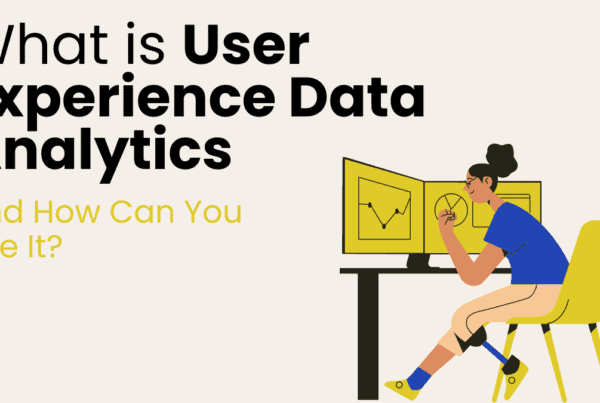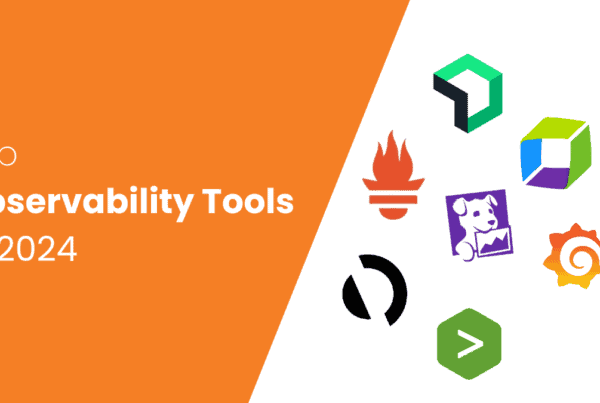
Data is like oil in today’s world. It is more valuable to businesses and marketers who are constantly looking for new ways to enhance their marketing strategies and reach a wider audience.
Amazon, one of the biggest e-commerce platforms, has a wealth of data about its customers, which is more granular and verified than any other publisher group. The total amount of data that Amazon has is difficult to estimate, but it is estimated to be in the exabyte (1 exabyte=1 billion gigabytes) range.
This is especially true for businesses that sell on Amazon’s platform. Advertisers have long been eager to get their hands on this data, but Amazon has been reluctant to share it due to privacy concerns.
In Q4 2019, Amazon quietly launched the Amazon Marketing Cloud (AMC) to meet the needs of advertisers. AMC provides advertisers with access to Amazon’s data, but in a way that protects customer privacy.
The launch of AMC coincided with job postings for Amazon and several advertising agencies, suggesting that AMC is being well-received by advertisers. This comprehensive platform offers a host of tools and features designed to maximize advertising efforts on the world’s largest online marketplace.
In this beginner’s guide, we will delve into the fundamentals of the Amazon Marketing Cloud, exploring its functionalities, benefits, and how it can be leveraged effectively to boost your business.
What is Amazon Marketing Cloud?
Amazon Marketing Cloud, often referred to as AMC, is a sophisticated marketing platform offered by Amazon. It provides businesses with a centralized hub to manage their advertising campaigns, optimize their ad spend, and target customers on Amazon’s various digital channels.
This comprehensive ecosystem encompasses a range of tools, including Amazon Advertising, Amazon DSP, and Amazon Attribution, among others, which work synergistically to help businesses achieve their marketing objectives.
According to an article published on podean.com, “AMC can be seen as Amazon’s version of Google Ads Data Hub”. Google Ads Data Hub is a privacy-safe data warehouse that allows businesses to combine their first-party data with Google’s event-level ad campaign data. This data can be used to improve marketing measurement, optimize advertising efficiency, and yield more effective campaign optimization.
Similarities and Differences Between AMC and Google Ads Data Hub
Here are some of the key similarities between AMC and Google Ads Data Hub:
- Both platforms allow businesses to combine their data with Google’s data to improve marketing measurement and campaign optimization.
- Both platforms are privacy-safe, meaning that businesses’ data is protected.
- Both platforms are cloud-based, meaning that businesses can access them from anywhere.
However, there are also some key differences between the two platforms:
- AMC is focused on Amazon’s advertising ecosystem, while Google Ads Data Hub is more general-purpose.
- AMC is a more mature platform than Google Ads Data Hub.
Now, after a detailed introduction and comparison to a more established platform let’s focus on AMC and talk more about it.
Key Features of Amazon Marketing Cloud
The Amazon Marketing Cloud offers a multitude of features designed to empower advertisers and drive optimal results. These include:
Amazon Advertising
Amazon Advertising is a vital component of the Amazon Marketing Cloud. It allows businesses to create and manage their advertising campaigns directly on the Amazon platform, reaching millions of potential customers.
With Amazon Advertising, you can leverage various ad formats, such as sponsored products, sponsored brands, and sponsored displays, to increase visibility and drive sales.
Amazon DSP
Amazon Demand-Side Platform (DSP) is a programmatic advertising tool that enables businesses to extend their reach beyond the Amazon ecosystem.
It offers access to a vast network of websites and apps, allowing advertisers to target relevant audiences based on their browsing behavior, demographics, and purchase history.
Amazon Attribution
Amazon Attribution is a valuable tool that provides insights into the effectiveness of your advertising efforts across various marketing channels.
By measuring and attributing sales and traffic back to your advertising campaigns, Amazon Attribution enables you to optimize your marketing spend and make data-driven decisions.
Benefits of Amazon Marketing Cloud
AMC provides a centralized hub for businesses to manage their advertising campaigns. This centralized hub features a range of tools and benefits for businesses and marketers. Here are some of the major benefits of AMC:
Enhanced Targeting Capabilities
One of the primary advantages of leveraging the Amazon Marketing Cloud is unparalleled access to a vast consumer base. With millions of shoppers actively engaging on the platform, businesses can employ advanced targeting capabilities to reach their desired audience.
Through demographic targeting, keyword targeting, and behavioral targeting, you can ensure your ads are shown to the most relevant potential customers, increasing the likelihood of conversions.
Seamless Integration and Cross-Channel Advertising
The Amazon Marketing Cloud offers seamless integration with other Amazon services, enabling advertisers to extend their reach and engage with customers throughout their buying journey.
By combining the power of Amazon Advertising, Amazon DSP, and Amazon Attribution, businesses can implement effective cross-channel advertising strategies that reinforce their brand message and increase customer engagement.
Actionable Insights and Analytics
With Amazon Marketing Cloud, businesses gain access to robust analytics and reporting tools. These insights allow advertisers to measure the impact of their campaigns, identify areas for improvement, and refine their marketing strategies accordingly.
By leveraging actionable data, businesses can optimize their ad spend, maximize return on investment (ROI), and achieve greater marketing efficiency.
Use Cases of Amazon Marketing Cloud (AMC)
AMC is a powerful tool that can be used for a variety of marketing purposes. Here are some of the most common use cases:
- Campaign analysis: AMC can be used to measure the performance of marketing campaigns across multiple channels. This includes traditional channels such as TV and print, as well as digital channels such as Amazon, Google, and Facebook.
- Path to Purchase by Campaign Type: AMC provides event-level indications to assist organizations in understanding their consumers’ journeys before making a purchase. One customer discovered that exposure to both DSP and Sponsored Products campaigns resulted in four times greater purchase rates, demonstrating the power of multi-touch analytics in AMC. Bascially, the more the potential customer saw the advertisers ad on their phone or computer in multiple places, the more likely they were going to become a customer.
- Attribution: It can be used to track the effectiveness of marketing campaigns and determine which channels are driving the most conversions. This information can be used to optimize campaigns and improve results.
- Time to Conversion: In Intentwise Analytics Cloud, AMC calculates the time a customer spends between engaging with an ad and purchasing a product (also known as “Time to Conversion”). This statistic aids in the optimization of look-back windows in retargeting campaigns, allowing retargeting at the optimal time to induce a purchase.
- Customer experience optimization: Users can use it to track the customer journey and identify the touchpoints that are most influential in driving conversions. This data will help businesses to improve the customer experience and increase sales.
- Logistics and supply chain: AMC can be used to better predict the volume of products that will be sold, and therefore the level of inventory that businesses need to supply. This can help to improve their efficiency and reduce costs.
- New to brand with Sponsored Products: Amazon provides limited new-to-brand statistics for display, video, and sponsored campaigns. AMC supports custom query calculations for Sponsored Products campaigns, allowing advertisers to optimize for reduced costs and analyze the efficacy of non-branded targeting.
- Product design: This marketing platform can be used to understand the granular shopping behaviours of customers and determine what products could be bundled together to increase sales. Data provided by this tool can help businesses in product design to increase their revenue and improve their customer satisfaction.
These are just a few of the many use cases of AMC. The AMC platform is rapidly evolving, and new use cases are coming to the surface all the time. If you are looking for a powerful tool to help you improve your marketing results, AMC is a great option to consider.
Getting Started with Amazon Marketing Cloud
After learning about the benefits, features, and use cases of Amazon Marketing Cloud, let’s look at how to get started with this gold mine.
Account Setup
To begin utilizing the Amazon Marketing Cloud, you need to create an Amazon Advertising account. This process involves providing necessary information about your business, setting up payment methods, and configuring your campaign preferences.
Once your account is established, you can access the various tools within the Amazon Marketing Cloud and start crafting your advertising campaigns.
Campaign Creation and Optimization
When creating your campaigns on the Amazon Marketing Cloud, it’s crucial to define clear objectives and select appropriate targeting options.
Consider factors such as your target audience, budget, and campaign duration. Continuously monitor your campaign’s performance, adjusting bidding strategies and refining ad content to maximize results.
Leveraging Advanced Features
As you become more familiar with the Amazon Marketing Cloud, consider exploring advanced features and strategies. Experiment with A/B testing, dynamic bidding, and personalized messaging to further enhance your campaign performance.
Regularly analyze performance metrics and optimize your campaigns based on data-driven insights.
AMC Offers a Data Dump for Experts, Use it Carefully
It is important to remember that AMC is not a pre-built dashboard or visual interface via which you can readily get insights. It is a big data dump from various sources that must be analyzed, interpreted, and visualized by professionals.
AMC is also a totally API-driven platform, which means that users must be comfortable with APIs, querying languages, JSON, and AWS services in order to use it. They must also have access to advanced analytics tools.
In other words, AMC is not a tool for companies looking for a straightforward way to track marketing performance. It is a tool for companies that want to use data to improve their marketing initiatives.
Conclusion
The Amazon Marketing Cloud presents a wealth of opportunities for businesses seeking to maximize their advertising efforts on the world’s largest online marketplace. By harnessing the power of Amazon Advertising, Amazon DSP, and Amazon Attribution, advertisers can effectively target their desired audience, drive conversions, and gain valuable insights to refine their marketing strategies.
With its comprehensive suite of tools and features, the Amazon Marketing Cloud serves as a powerful resource for businesses looking to enhance their digital marketing capabilities. Embrace this beginner’s guide as a stepping stone to navigating the Amazon Marketing Cloud and unlocking its potential for your business’s growth.
References:
- https://advertising.amazon.com/solutions/products/amazon-marketing-cloud
- https://perpetua.io/amc-amazon-marketing-cloud/
- https://www.podean.com/amazon-explained-amazon-marketing-cloud-amc/
- https://stratably.com/amazon-marketing-cloud-everything-ive-learned-so-far/
- https://www.intentwise.com/blog/amazon-advertising/three-amc-use-cases/
- https://www.channelsight.com/blog/amazon-marketing-cloud



